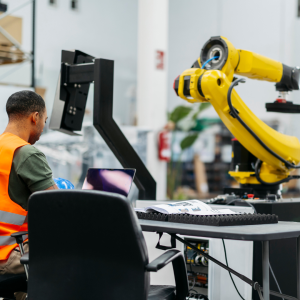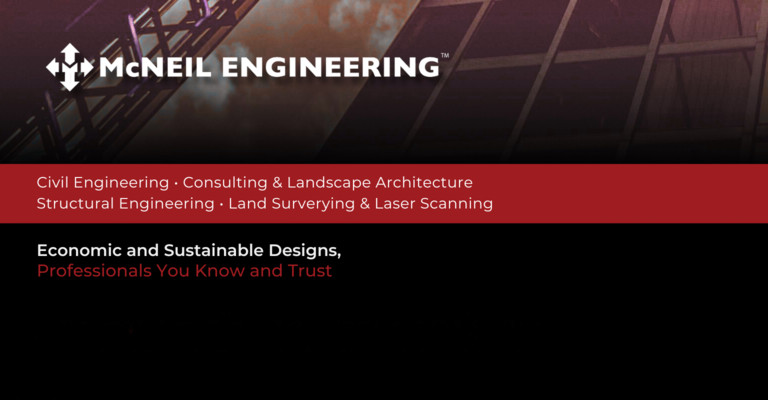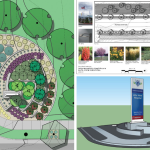 Artificial intelligence is no longer science fiction. In 2025, AI is rapidly becoming a critical tool across multiple engineering and design disciplines. From streamlining workflows to improving safety and sustainability, the influence of AI can now be seen across everything from civil and structural engineering to laser scanning, land surveying, and landscape design.
Artificial intelligence is no longer science fiction. In 2025, AI is rapidly becoming a critical tool across multiple engineering and design disciplines. From streamlining workflows to improving safety and sustainability, the influence of AI can now be seen across everything from civil and structural engineering to laser scanning, land surveying, and landscape design.
These advances aren’t replacing engineers, but they are changing the way problems are solved, projects are delivered, and decisions are made.
Smarter Structural Design Through Machine Learning
Structural engineering is seeing a shift toward predictive design. With AI tools trained on thousands of building configurations, engineers can now simulate load-bearing scenarios, seismic behavior, and material performance faster than ever before. Machine learning models are being used to test how different materials perform under stress or how structural configurations respond to varying environmental conditions.
This technology is also being applied to improve retrofitting strategies for older infrastructure, providing engineers with recommendations on how to strengthen unreinforced masonry or aging steel frames with minimal disruption.
Civil Engineering Meets Predictive Infrastructure Planning
In civil engineering, AI is being used to analyze complex environmental, topographical, and hydrological datasets to identify risks and opportunities during the planning phase. For example, AI-powered simulations can evaluate how roads and drainage systems will handle future storm events or traffic patterns, helping reduce long-term maintenance costs.
AI is also improving construction management. Algorithms are tracking job site data in real time to help identify scheduling delays or potential safety risks. Some construction firms are even piloting AI systems that optimize supply chain logistics based on real-world constraints like weather, traffic, and material availability.
AI-Powered Laser Scanning and Land Surveying
Laser scanning has become a standard tool for capturing detailed measurements of structures and terrain. AI takes that a step further by interpreting those scans automatically. Instead of requiring manual point-cloud processing, AI algorithms can identify terrain features, structural defects, and elevation changes with greater speed and accuracy.
For land surveying, AI is helping create faster site models and more reliable boundary maps by correcting anomalies in real-time. Paired with drone technology, these tools are generating highly accurate surveys of complex sites in a fraction of the time traditional methods require.
Enhancing BIM With Artificial Intelligence
Building Information Modeling (BIM) continues to evolve through AI integration. These smart platforms now use AI to detect design conflicts between disciplines, recommend layout optimizations, and simulate construction sequencing. Designers and engineers can generate more precise construction documents with fewer revisions, saving both time and money.
Some BIM tools even incorporate generative design features, which allow users to input key constraints (such as budget, square footage, or energy goals) and have the software produce multiple viable design alternatives. These options can then be evaluated based on performance criteria using predictive modeling.
Landscape Architecture and Environmental Forecasting
AI is also making an impact in landscape architecture. Climate modeling tools are now helping designers anticipate future conditions—like heatwaves or flooding—and design outdoor environments that are more resilient.
AI can suggest appropriate plant species based on microclimates and predict how soil erosion, shade patterns, and water usage will evolve over time. This improves sustainability, lowers maintenance costs, and creates healthier, more functional spaces for the people who use them.
Roofing and Paving Forecasting Tools
In roofing and paving, AI is being used to predict degradation and suggest maintenance timelines based on usage data, UV exposure, and temperature fluctuations. Algorithms analyze sensor and weather data to project the expected lifespan of materials more accurately.
Some systems are now able to scan drone imagery to identify roofing defects or signs of failure not visible to the naked eye. These AI-supported inspections are improving preventative maintenance and helping extend the usable life of surfaces.
An Industry Still in Transition
Although AI is delivering real value, adoption across the engineering and design sectors is still evolving. Most professionals view these tools as augmentative rather than transformative—an enhancement to traditional workflows rather than a complete overhaul.
Still, the potential is significant. As models become more accurate, and software continues to improve, engineers and designers will be able to make faster, smarter, and more confident decisions throughout the project lifecycle.
AI is not replacing the need for judgment, creativity, or hands-on experience. But it is reducing time spent on repetitive tasks and opening new possibilities for innovation, efficiency, and accuracy.
To learn more about how engineering and design are evolving in today’s technology landscape, visit our websit. We’re committed to staying informed so we can continue delivering expertise that meets the needs of modern development.








